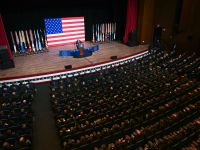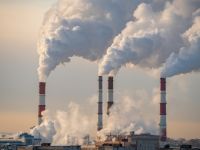With a new leadership in place, Indonesia has been taking a long, hard look at its mechanisms for exploiting key fossil fuel assets.
State oil company Pertamina has come under particular scrutiny amid mounting domestic and international pressure to restructure and liberalize the nation's natural resources business environment. John Mueller reviews the latest developments.
Faced with the need to replenish oil reserves through more active exploration and development, Indonesia has repeatedly held out the prospect of improved exploration and production sharing terms to contractors.
A 'Vision 2010' scenario has been presented, outlining growth and development, but to date no specific changes to the established production sharing contract system have been detailed.
Having produced at a rate of 1.297 million b/d of crude oil and 142,000b/d of condensate last year, it has been proving difficult to meet oil production targets of about 1.35 million b/d of oil for the year.
This is due to a number of factors, largely arising from the turmoil and destabilizing effects of political change.
Pertamina is under pressure to downsize and make itself more profitable, but the government is reluctant to end fuel subsidies.
At the same time, expectations have been raised among hydrocarbon-rich regions keen to have a larger share of production revenue.
Indonesia has proven oil reserves of about 9 billion barrels of oil and 136tcf of gas. In this overview, Asian Oil & Gas looks at the opportunities and challenges facing the country in its quest for more effective exploitation of its fossel fuel asset base.
Vision 2010:
Mandated by the Indonesian government to manage the oil and gas industry, Pertamina has been tasked with the dual function of not only developing the nation's hydrocarbon assets, but also supplying and distributing oil based fuels (OBF) to meet domestic needs.
This latter requirement has caused Pertamina to face problems that have hampered its ability to accumulate capital, thereby restricting development.
The non-profit based domestic supply and distribution of OBF has compelled Pertamina to eat up huge amounts of its own resources, leaving only a relatively small source of funds for its commercial business, including operations in the upstream sector which have mostly been executed by the production sharing contractors.
Formerly a taboo subject for discussion, the OBF subsidy has become a matter of public discourse.
Not only is it hampering Pertamina's cash flow and profit yield, the relatively low price of OBF has resulted in wasteful use and induced smuggling of OBF abroad.
Pressure is mounting as domestic demand for OBF continues to increase, aggravated by insufficient refining capacity.
Substantial investments to increase refinery capacity, import OBF, and exploit oil and gas reserves are needed.
Pertamina's current organisation is considered too large, complex and centralised to deal with these problems. The company also realizes that it must downsize and reduce bureaucracy.
Growing market competitiveness arising from globalisation will compel this as well as winnow out those enterprises that are not able to compete.
Amendments to oil and gas laws and other regulations which can open the door more widely for free competition in the national oil and gas industry are under active review.
Pertamina, however, views new regulations regarding regional autonomy and financial balance between the central and regional administrations with concern.
It believes they require careful study, as they have the capacity to complicate the process of formulating and implementing more attractive oil and gas exploration and production sharing terms.
Anticipating the need for change, Pertamina Vision 2010 - a growth and development scenario that is an attempt to identify obstacles, challenges, and strategic problems - has been adopted.
This visionary plan foresees the presence, and necessity, of positive business conditions such as: OBF supply and distribution being commercially based on market forces; more flexible access to capital; new hydrocarbon exploitation supportive regulations and Pertamina's ability to compete internationally.
Exploration:
Currently, 162 blocks are being explored and operated by 182 operators, both national and multinational companies, under a variety of contractual agreements.
The blocks comprise 105 production sharing contract areas, 18 joint operating arrangement areas, 33 technical assistance contract areas and six enhanced oil recovery contract areas.
Forty-six of the contract areas are already in production, 104 areas are still in exploration, evaluation phase for development or well rehabilitation, while 12 areas are under relinquishment process.
Seismic surveying, which began in earnest in the late 1960s, increased to an average of almost 25,266km of 2D and 4393km of 3D a year in the 1990s. The impact of the Asian economic crisis brought about a sharp decline in activity after a very robust period in 1997.
Exploration drilling decreased markedly in 1994-1997, plunging to a record low of 75 wells for the decade before briefly rebounding to a high of 134 wells in 1998 and then tapering off again in 1999, another victim of economic uncertainty.
Development drilling, however, has bucked the prevailing downward drift, rising to a 1990s high of 960 wells last year. This is in part a reflection of an ongoing shift to marginal fields of which Pertamina has identified about 40 in Indonesia capable of a combined production estimated at 320,000b/d.
Oil and gas contracts signed over the 1990-1999 period show an almost across the board decline in all categories, dipping dramatically from a 1997 total high of 29 to just four PSCs and three extension contracts in 1999.
A number of working areas (blocks) offered by Pertamina for licensing in 2000 may be acquired under various contract arrangements.
In addition, 19 PSC post-tender areas were also made available for licensing this year. For these areas, interested companies are allowed to proceed directly with a data review.
Pertamina, however, may decide to re-tender the post-tender PSC areas when more than one company is interested in an area. Additionally, Pertamina says it will discuss proposals for any open areas.
In the Makassar Strait six blocks, each over 3000km2 in area, have been tentatively defined for tender offer: Popodi, Donggala, Papalang, Taritip and Jangeru, based on preliminary geological results from the interpretation of 6500km of non-exclusive 2D seismic survey, and Tanjung Aru, based on 3D seismic survey.
All of these blocks are in water depths of more than 700m, within the central part of the Makassar Strait, a new hydrocarbon province distinct from the adjacent, established Mahakam Delta of East Kalimantan.
By John Mueller
© 2001 Mena Report (www.menareport.com)







